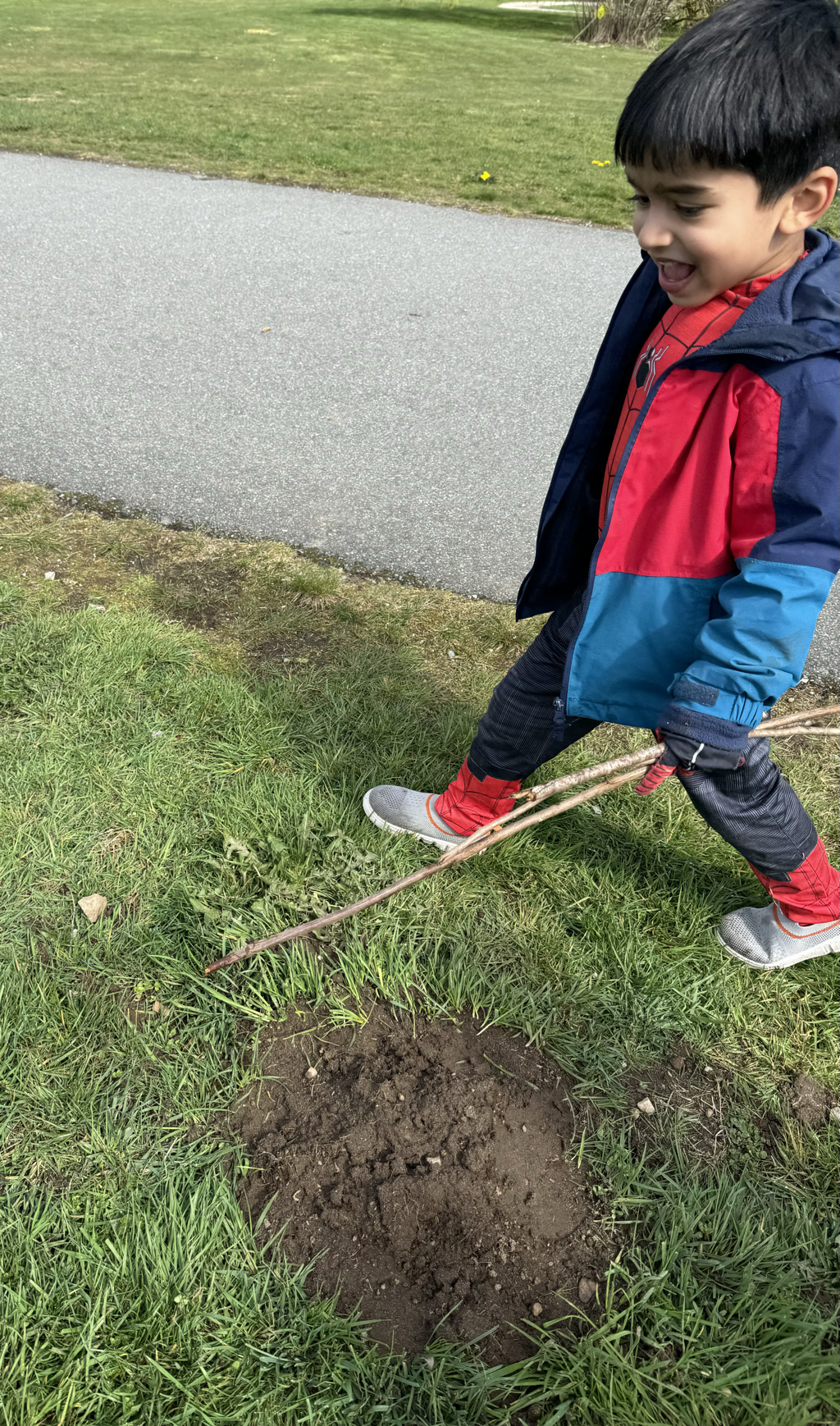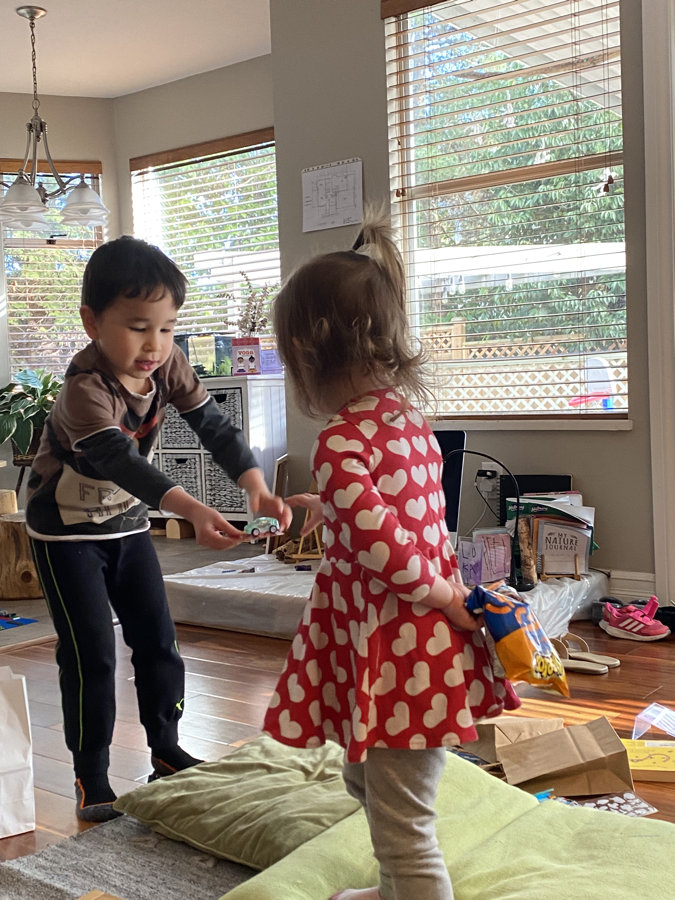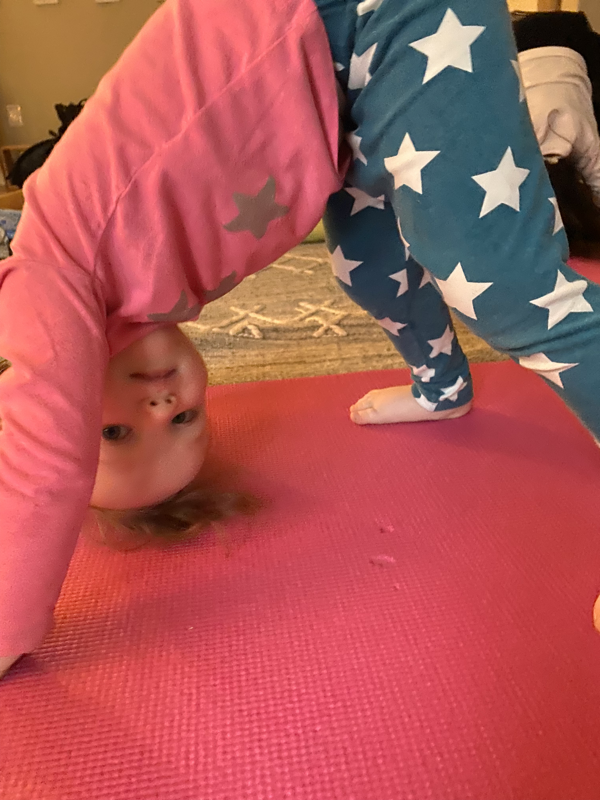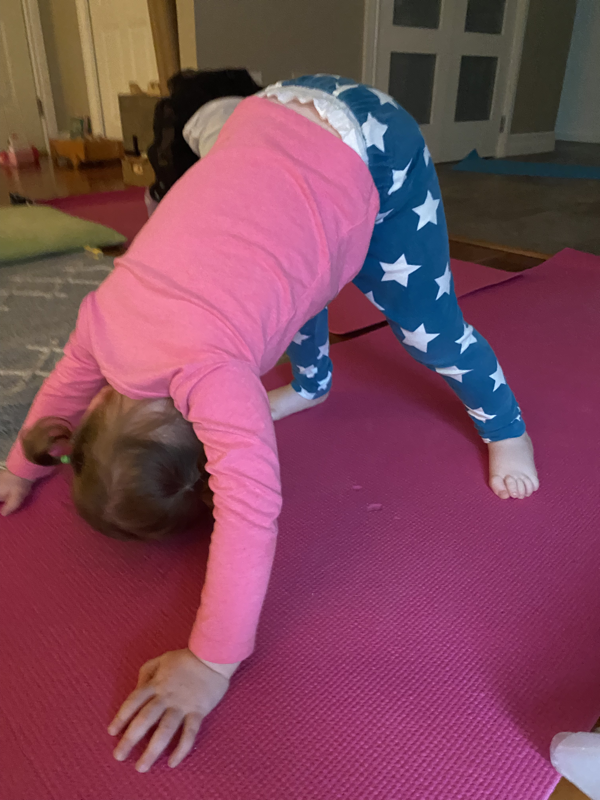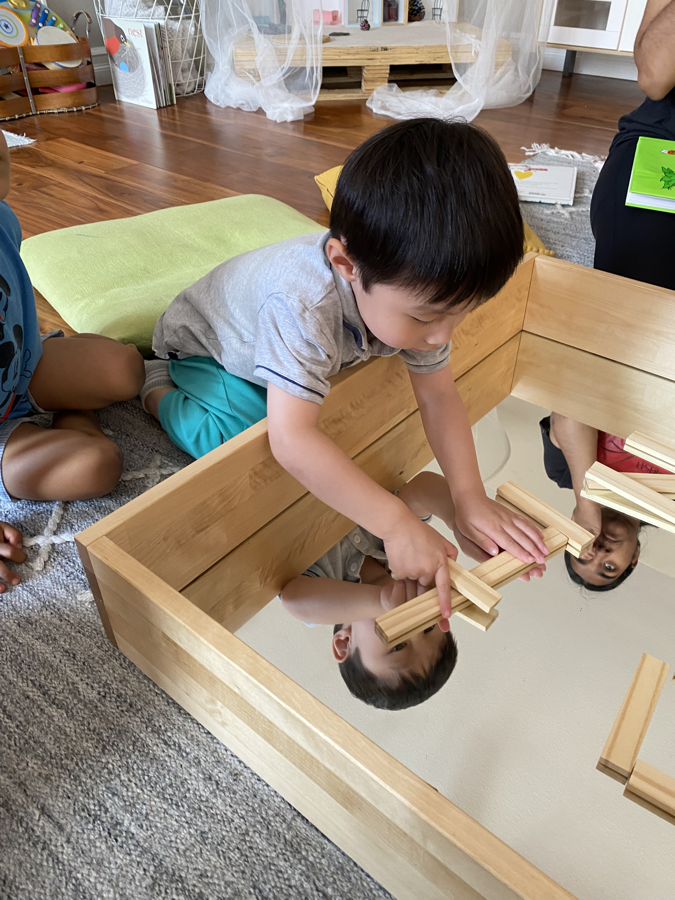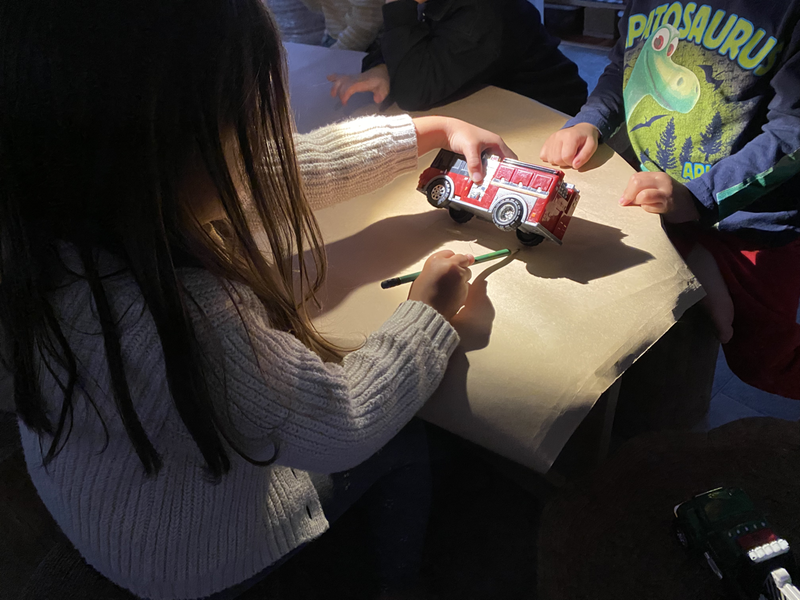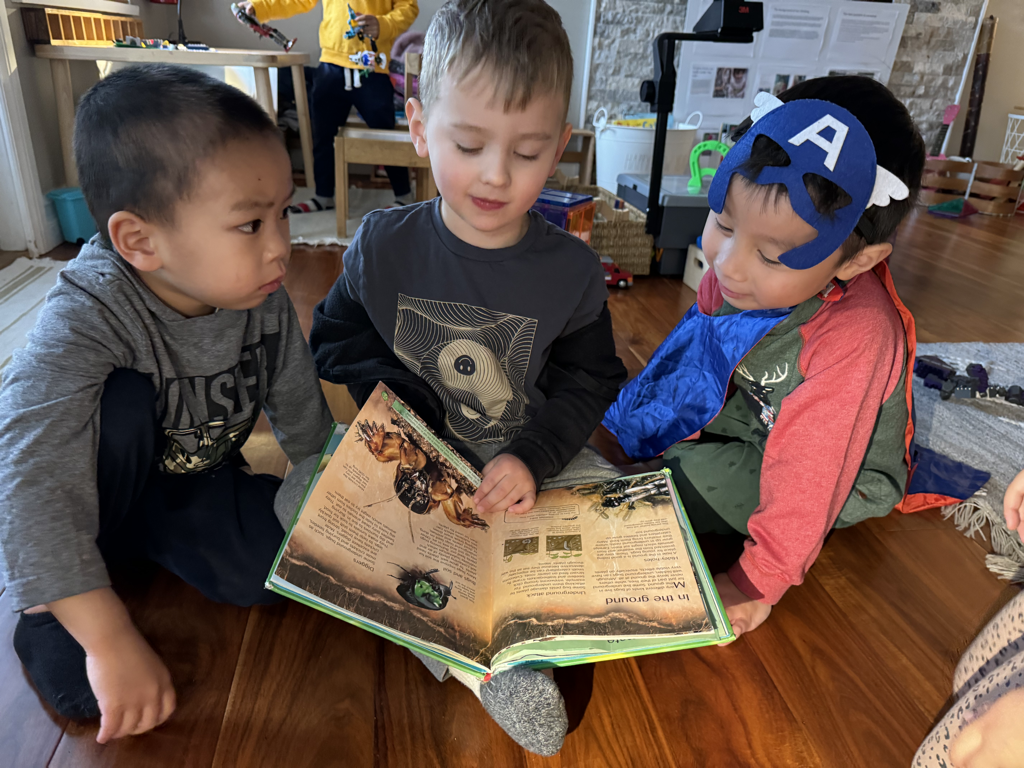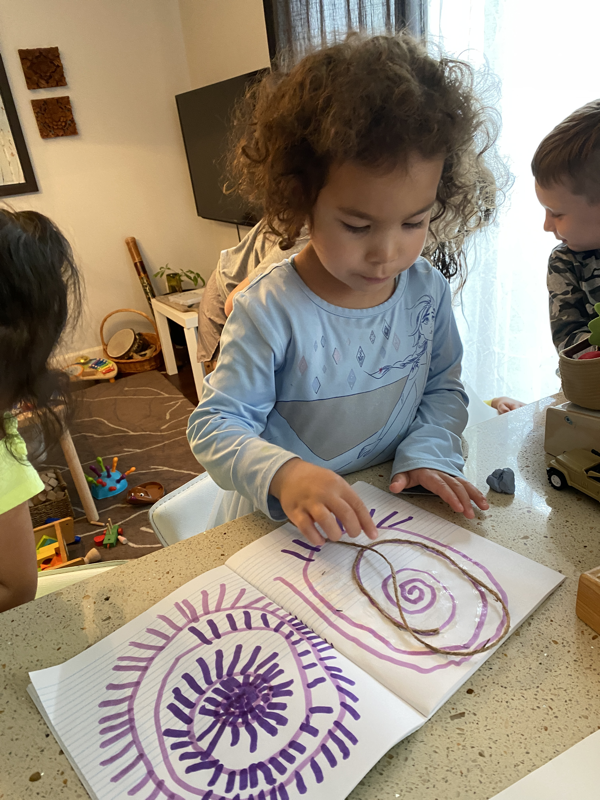|
Environment as the third teacher enables us to be sensitive with our senses. When the wind blows the leaves around us, it invites us to engage our sense of sight to notice and admire its gracefulness. Pausing for a moment for just lying down on the ground sends a sense of calmness to our bodies and being present in the moment itself. By giving ourselves to pause or be in the moment, we choose to sense the stillness or changes around us. Learning takes place whenever we have the opportunity to collaborate and interact with our environment. As we observe we create new knowledge together. Friends, being observer learners, slowly gather our attentions toward the nearby evergreen trees. Engaging our sense of touch, which is intently focused on our fingertips, enables the feel of an object to be enhanced. Each of our five senses is engaged in its own way to create a learning experience that we can translate to our real-world surroundings. Sometimes, the senses are engaged in coordination with each other, further enhancing our awareness and relationships with our environment. We begin by learning sameness and differences between objects and then move on to giving way to the necessary language used to describe them as well. Through his immediate sense perception, Vivaan highlights the characteristic of evergreen leaves to be "prickly" and "tickly". As we have been noticing increasing amount of colorful leaves lying on the ground nowadays, our sense of awareness has informed us to take note of this particular change. We choose to collect fresh and dry leaves lying on the ground to support our further conversations and thinking. We love to find patterns in the world around us. Patterns help us understand change that things happen over time. Patterns are things that repeat in a logical way. They can be numbers, images or shapes. Patterns help us make predictions because we begin to understand what comes next. It too helps us learn how to make logical connections and use reasoning skills. We like to challenge children's thinking by further asking open-ended questions. We purposely let this question sit on Luna's thought of the leaves are being sick by offering her to consider the color of the leaves which are remain green. At this point, children make an associative learning between the attributes of the leaves, brown and dry, and the health condition of leaves. As much as us being interested in the charm of Fall, we bring a storybook Fletcher and the Falling Leaves by Mem Fox into our group reading together. We learn as the story goes that Fletcher gets worried that something is terribly wrong whenever the leaves fall from his favorite tree. Elie shares her thought that, "it's getting cold and the leaves are turning brown". At the same time Felix notices and agrees that, "the leaves turning brown". "The mom says she has to put some medicine on it", Luna elaborates her thought while pondering on our question "what happens to the leaves?". Elie seconds Luna's thought by adding, "the trees need medicine to grow" and "the leaves to go back to green (color)". Brooks notices, "it (leaves) changes colors" although we are being uncertain of the whys. Another interesting thought "because of fire" is shared by Vivaan on "why are the leaves turning brown?". We make connections between our thinking processes and the drawings on the paper. We include circles, squares, rectangles, dots, and lines to purposely tell what each illustration represents. The shapes we like to begin with usually to form people, later on we include images such as houses. Drawing takes on more meaning and intention. We deliberately try to combine shapes and lines together to look like the images we describe. 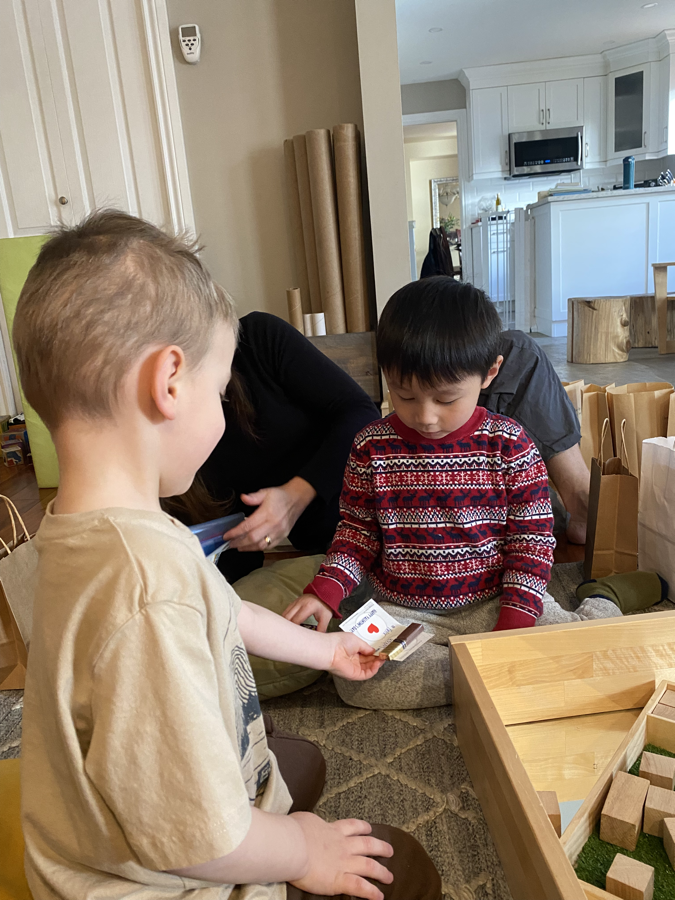 When Jana goes outside to extend children's interests inspired by Fletcher's passionate act toward the leaves, Felix reaches out to stick the leave back onto its branch. Thank you for thinking deeply for the leaves! Kindest,
Children & Friends.
0 Comments
Leave a Reply. |
No part of this publication may be reproduced, distributed, or transmitted in any form or by any means, including photocopying, recording or any other electronic or mechanical methods, without the prior written permission of the publisher.
Archives
July 2024
|
